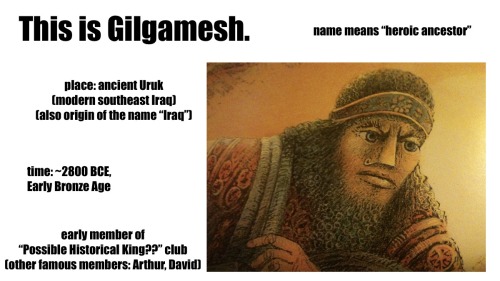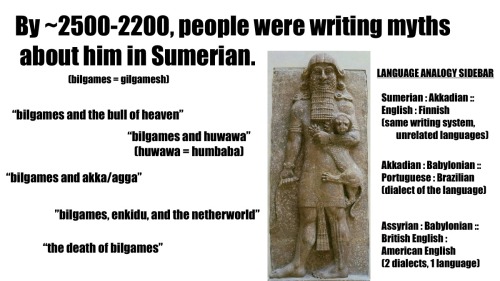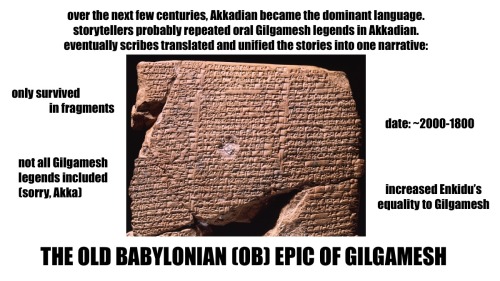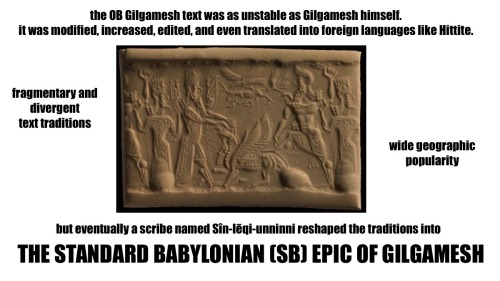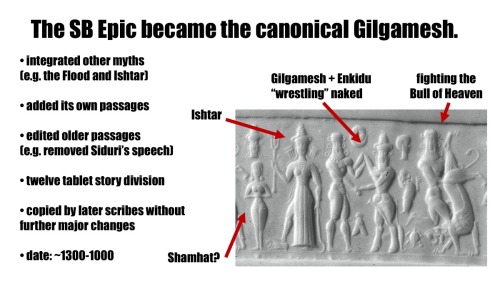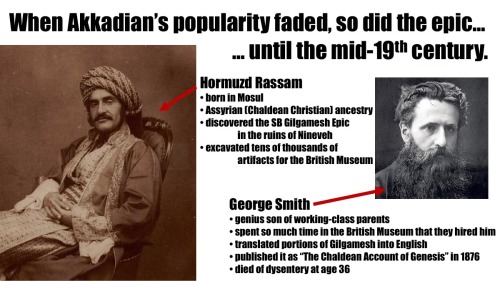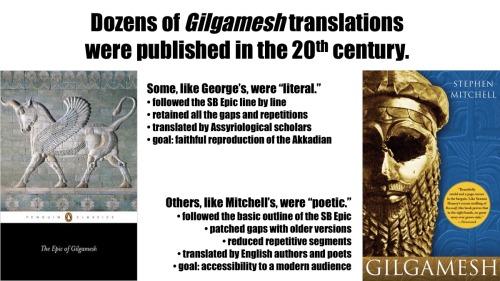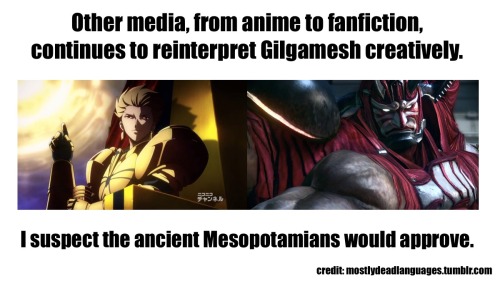Kilroy Was Here!

Kilroy Was Here!
He’s engraved in stone in the National World War II Memorial in Washington, DC – back in a small alcove where very few people have seen it. For the WWII generation, this will bring back memories. For younger folks, it’s a bit of trivia that is an intrinsic part of American history and legend.
Anyone born between 1913 to about 1950, is very familiar with Kilroy. No one knew why he was so well known….but everybody seemed to get into it. It was the fad of its time!

At the National World War II Memorial in Washington, DC
So who was Kilroy?
In 1946 the American Transit Association, through its radio program, “Speak to America,” sponsored a nationwide contest to find the real Kilroy….now a larger-than-life legend of just-ended World War II….offering a prize of a real trolley car to the person who could prove himself to be the genuine article.

Almost 40 men stepped forward to make that claim, but only James Kilroy from Halifax, Massachusetts, had credible and verifiable evidence of his identity.
“Kilroy” was a 46-year old shipyard worker during World War II (1941-1945) who worked as a quality assurance checker at the Fore River Shipyard in Quincy, Massachusetts (a major shipbuilder for the United States Navy for a century until the 1980s).
His job was to go around and check on the number of rivets completed. (Rivets held ships together before the advent of modern welding techniques.) Riveters were on piece work wages….so they got paid by the rivet. He would count a block of rivets and put a check mark in semi-waxed lumber chalk (similar to crayon), so the rivets wouldn’t be counted more than once.

A warship hull with rivets
When Kilroy went off duty, the riveters would surreptitiously erase the mark. Later, an off-shift inspector would come through and count the rivets a second time, resulting in double pay for the riveters!
One day Kilroy’s boss called him into his office. The foreman was upset about unusually high wages being “earned” by riveters, and asked him to investigate. It was then he realized what had been going on.
The tight spaces he had to crawl in to check the rivets didn’t lend themselves to lugging around a paint can and brush, so Kilroy decided to stick with the waxy chalk. He continued to put his check mark on each job he inspected, but added ”KILROY WAS HERE!“ in king-sized letters next to the check….and eventually added the sketch of the guy with the long nose peering over the fence….and that became part of the Kilroy message.

Kilroy’s original shipyard inspection “trademark” during World War II
Once he did that, the riveters stopped trying to wipe away his marks.
Ordinarily the rivets and chalk marks would have been covered up with paint. With World War II on in full swing, however, ships were leaving the Quincy Yard so fast that there wasn’t time to paint them. As a result, Kilroy’s inspection “trademark” was seen by thousands of servicemen who boarded the troopships the yard produced.
His message apparently rang a bell with the servicemen, because they picked it up and spread it all over the European and the Pacific war zones.

Before war’s end, “Kilroy” had been here, there, and everywhere on the long hauls to Berlin and Tokyo.
To the troops outbound in those ships, however, he was a complete mystery; all they knew for sure was that someone named Kilroy had “been there first.” As a joke, U.S. servicemen began placing the graffiti wherever they landed, claiming it was already there when they arrived.

As the World War II wore on, the legend grew. Underwater demolition teams routinely sneaked ashore on Japanese-held islands in the Pacific to map the terrain for coming invasions by U.S. troops (and thus, presumably, were the first GI’s there). On one occasion, however, they reported seeing enemy troops painting over the Kilroy logo!
Kilroy became the U.S. super-GI who had always “already been” wherever GIs went. It became a challenge to place the logo in the most unlikely places imaginable. (It is said to now be atop Mt. Everest, the Statue of Liberty, the underside of the Arc de Triomphe in Paris, and even scrawled in the dust on the moon by the American astronauts who walked there between 1969 and 1972.

In 1945, as World War II was ending, an outhouse was built for the exclusive use of Allied leaders Harry Truman, Joseph Stalin, and Winston Churchill at the Potsdam Conference. It’s first occupant was Stalin, who emerged and asked his aide (in Russian), “Who is Kilroy?”
To help prove his authenticity in 1946, James Kilroy brought along officials from the shipyard and some of the riveters. He won the trolley car….which he attached to the Kilroy home and used to provide living quarters for six of the family’s nine children….thereby solving what had become an acute housing crisis for the Kilroys.

The new addition to the Kilroy family home.
* * * *
And the tradition continues into the 21st century…

In 2011 outside the now-late-Osama Bin Laden’s hideaway house in Abbottabad, Pakistan….shortly after the al-Qaida-terrorist was killed by U.S. Navy SEALs.
>>Note: The Kilroy graffiti on the southwest wall of the Bin Laden compound pictured above was real (not digitally altered with Microsoft Paint, as postulated by some). The entire compound was leveled in 2012 for redevelopment by a Pakistani company as an amusement park….and to avoid it becoming a shrine to Bin Laden’s nefarious memory.
* * * *
A personal note….
My Dad’s trademark signature on cards, letters and notes to my sisters and I for the first 50 or so years of our lives (until we lost him to cancer) was to add the image of “Kilroy” at the end. We kids never ceased to get a thrill out of this….even as we evolved into adulthood.
To this day, the “Kilroy” image brings back a vivid image of my awesome Dad into my head….and my heart!
Dad: This one’s for you!

More Posts from Philosophical-amoeba and Others

(Image caption: If this picture makes you feel uncomfortable, you feel empathic pain. This sensation activates the same brain regions as real pain. © Kai Weinsziehr for MPG)
The anatomy of pain
Grimacing, we flinch when we see someone accidentally hit their thumb with a hammer. But is it really pain we feel? Researchers at the Max Planck Institute for Human Cognitive and Brain Sciences in Leipzig and other institutions have now proposed a new theory that describes pain as a multi-layered gradual event which consists of specific pain components, such as a burning sensation in the hand, and more general components, such as negative emotions. A comparison of the brain activation patterns during both experiences could clarify which components the empathic response shares with real pain.
Imagine you’re driving a nail into a wall with a hammer and accidentally bang your finger. You would probably injure finger tissue, feel physical distress, focus all your attention on your injured finger and take care not to repeat the misfortune. All this describes physical and psychological manifestations of “pain” – specifically, so-called nociceptive pain experienced by your body, which is caused by the stimulation of pain receptors.
Now imagine that you see a friend injure him or herself in the same way. You would again literally wince and feel pain, empathetic pain in this case. Although you yourself have not sustained any injury, to some extent you would experience the same symptoms: You would feel anxiety; you may recoil to put distance between yourself and the source of the pain; and you would store information about the context of the experience in order to avoid pain in the future.
Activity in the brain
Previous studies have shown that the same brain structures – namely the anterior insula and the cingulate cortex – are activated, irrespective of whether the pain is personally experienced or empathetic. However, despite this congruence in the underlying activated areas of the brain, the extent to which the two forms of pain really are similar remains a matter of considerable controversy.
To help shed light on the matter, neuroscientists, including Tania Singer, Director at the Max Planck Institute for Human Cognitive and Brain Sciences in Leipzig, have now proposed a new theory: “We need to get away from this either-or question, whether the pain is genuine or not.”
Instead, it should be seen as a complex interaction of multiple elements, which together form the complex experience we call “pain”. The elements include sensory processes, which determine, for example, where the pain stimulus was triggered: in the hand or in the foot? In addition, emotional processes, such as the negative feeling experienced during pain, also come into play. “The decisive point is that the individual processes can also play a role in other experiences, albeit in a different activation pattern,” Singer explains – for example, if someone tickles your hand or foot, or you see images of people suffering on television. Other processes, such as the stimulation of pain receptors, are probably highly specific to pain. The neuroscientists therefore propose comparing the elements of direct and empathetic pain: Which elements are shared and which, by contrast, are specific and unique to the each form of pain?
Areas process general components
A study that was published almost simultaneously by scientists from the Max Planck Institute for Human Cognitive and Brain Sciences and the University of Geneva has provided strong proof of this theory: They were able to demonstrate for the first time that during painful experiences the anterior insula region and the cingulate cortex process both general components, which also occur during other negative experiences such as disgust or indignation, and specific pain information – whether the pain is direct or empathic.
The general components signal that an experience is in fact unpleasant and not joyful. The specific information, in turn, tells us that pain – not disgust or indignation – is involved, and whether the pain is being experienced by you or someone else. “Both the nonspecific and the specific information are processed in parallel in the brain structures responsible for pain. But the activation patterns are different,” says Anita Tusche, also a neuroscientist at the Max Planck Institute in Leipzig and one of the authors of the study.
Thanks to the fact that our brain deals with these components in parallel, we can process various unpleasant experiences in a time-saving and energy-saving manner. At the same time, however, we are able register detailed information quickly, so that we know exactly what kind of unpleasant event has occurred – and whether it affects us directly or vicariously. “The fact that our brain processes pain and other unpleasant events simultaneously for the most part, no matter if they are experienced by us or someone else, is very important for social interactions,” Tusche says, “because it helps to us understand what others are experiencing.”







The Christopher Robin Story Book from When we were very young, Now we are six, Winnie the Pooh, The House at Pooh Corner by AA Milne Illustrated by Ernest H Shepard London Methuen & Co Ltd. First Edition 1929




Everyday Phenomena: The Maillard Reaction
At first glance, steak, French fries, bread, milk caramel, and soy sauce don’t have very many similarities. However, the preparation of these foods all have one thing in common: browning that occurs via the Maillard (my-YAR) reaction.
The Maillard reaction was first discovered in 1912 by Louis-Camille Maillard, and refers to a long chain of reactions that ultimately leads to browning of food. This chain typically begins with the condensation of an amine (often the amino acid lysine) with a reducing sugar (containing an aldehyde); one example of this Amadori rearrangement is shown above with lysine and glucose.
This Amadori product can react in a variety of different ways, including dehydration and deamination to produce a diverse array of molecules that give browned food a distinctive flavor; a few of these compounds are shown above. At the end of the sequence of reactions that occur during browning is a class of polymeric compounds known as melanoidins, which lend a brown color to the food.
Below about 140°C (280°F), the Maillard reaction does not proceed at an appreciable rate, although alkaline conditions (such as the lye used to make pretzels) can accelerate the process. Without this reaction, many foods we enjoy now wouldn’t be nearly as tasty!
Further Reading: Hodge, J. E., J. Agric. Food Chem. 1953, 1 (15), 928-943 (Full text)

In slow motion, vortex rings can be truly stunning. This video shows two bubble rings underwater as they interact with one another. Upon approach, the two low-pressure vortex cores link up in what’s known as vortex reconnection. Note how the vortex rings split and reconnect in two places – not one. According to Helmholtz’s second theorem a vortex cannot end in a fluid–it must form a closed path (or end at a boundary); that’s why both sides come apart and together this way. After reconnection, waves ripple back and forth along the distorted vortex ring; these are known as Kelvin waves. Some of those perturbations bring two sides of the enlarged vortex ring too close to one another, causing a second vortex reconnection, which pinches off a smaller vortex ring. (Image source: A. Lawrence; submitted by Kam-Yung Soh)
Note: As with many viral images, locating a true source for this video is difficult. So far the closest to an original source I’ve found is the Instagram post linked above. If you know the original source, please let me know so that I can update the credit accordingly. Thanks!

Rishi coffin for a commoner
Second Intermediate Period, Dynasty 17, 1580–1550 B.C. (find spot unknown)
In Dynasty 17 a new type of coffin appeared in Thebes: anthropoid, but no longer conceived solely as an inner coffin, and resting on its back because of a change in funerary customs whereby the deceased was no longer laid on one side. The anthropoid coffin was to become the burial container of choice among royals and commoners alike. The earliest examples are decorated in paint with a feather pattern, and so they are known by the Arabic word for “feathered,” rishi. Carved from local sycamore because the Thebans no longer had access to imported cedar, all rishi coffins, royal or private, show the deceased wearing the royal nemes headdress. This example was clearly a stock item made for a commoner, for a blank space was left for the owner’s name to be inserted at the end of the vertical inscription on the lid (a conventional offering formula for the dead).
Great vulture’s wings envelop the legs and lower abdomen. Even the top of the headdress is decorated with a feather pattern so that the deceased appears as a human-headed bird according to the concept of the ba, or mobile spirit. The ba could travel to any place and transform itself into anything it desired. The face on the coffin is painted black, not to represent the unknown owner’s race but to reinforce his identification with Osiris. The flesh of the god of death and resurrection was often shown as black or green to signify the black silt that fertilized the land with each year’s Nile flood, and the new life in the form of green vegetation that it brought forth. Painted on the chest is a pectoral, or chest ornament, in the form of a vulture and cobra, symbols of Nekhbet and Wadjyt, the tutelary goddesses of Upper and Lower Egypt.
Source: Museum of Fine Arts Boston

Which Shakespeare Play Should I See?
This coming Saturday is the 400th anniversary of Shakespeare’s death! Not sure what Shakespeare play you should see or read to commemorate the occasion? No worries! I’ve put together a little flowchart to help you make up your mind.
HAPPY SHAKESPEARE-ING, EVERYONE!
im putting together a couple of scottish folk mixes bc that’s what i do and im honestly curious if anyone in my country has ever been unequivocally happy about anything ever
-
 dictyboy reblogged this · 1 month ago
dictyboy reblogged this · 1 month ago -
 dictyboy liked this · 1 month ago
dictyboy liked this · 1 month ago -
 pscottm liked this · 1 month ago
pscottm liked this · 1 month ago -
 signsof-thetimes reblogged this · 1 month ago
signsof-thetimes reblogged this · 1 month ago -
 cavernario-galindo liked this · 1 month ago
cavernario-galindo liked this · 1 month ago -
 pscottm reblogged this · 1 month ago
pscottm reblogged this · 1 month ago -
 lonesome-cowboy-bill liked this · 1 month ago
lonesome-cowboy-bill liked this · 1 month ago -
 thebongomediaempire reblogged this · 1 month ago
thebongomediaempire reblogged this · 1 month ago -
 davidpumpkinseater liked this · 1 month ago
davidpumpkinseater liked this · 1 month ago -
 sharpmidnight reblogged this · 1 month ago
sharpmidnight reblogged this · 1 month ago -
 uft36 liked this · 1 month ago
uft36 liked this · 1 month ago -
 mercury57 liked this · 1 month ago
mercury57 liked this · 1 month ago -
 erarousfire liked this · 1 month ago
erarousfire liked this · 1 month ago -
 erarousfire reblogged this · 1 month ago
erarousfire reblogged this · 1 month ago -
 sarcasticironicsardonic reblogged this · 1 month ago
sarcasticironicsardonic reblogged this · 1 month ago -
 sarcasticironicsardonic liked this · 1 month ago
sarcasticironicsardonic liked this · 1 month ago -
 adrianmacky liked this · 1 month ago
adrianmacky liked this · 1 month ago -
 riptide-rabbitholes reblogged this · 1 month ago
riptide-rabbitholes reblogged this · 1 month ago -
 notaboyscout-65 liked this · 1 month ago
notaboyscout-65 liked this · 1 month ago -
 rizu-not-risu liked this · 1 month ago
rizu-not-risu liked this · 1 month ago -
 cursedberrycompote reblogged this · 1 month ago
cursedberrycompote reblogged this · 1 month ago -
 cursedberrycompote liked this · 1 month ago
cursedberrycompote liked this · 1 month ago -
 jordmorg liked this · 1 month ago
jordmorg liked this · 1 month ago -
 chloepreston reblogged this · 1 month ago
chloepreston reblogged this · 1 month ago -
 diamondchiken101 reblogged this · 1 month ago
diamondchiken101 reblogged this · 1 month ago -
 diamondchiken101 liked this · 1 month ago
diamondchiken101 liked this · 1 month ago -
 unganatorgozoff liked this · 1 month ago
unganatorgozoff liked this · 1 month ago -
 ohthecalamity liked this · 1 month ago
ohthecalamity liked this · 1 month ago -
 ace-apple reblogged this · 1 month ago
ace-apple reblogged this · 1 month ago -
 scallioncreamcheesebagel liked this · 1 month ago
scallioncreamcheesebagel liked this · 1 month ago -
 bobeatspie300 reblogged this · 1 month ago
bobeatspie300 reblogged this · 1 month ago -
 mobbothetrue reblogged this · 1 month ago
mobbothetrue reblogged this · 1 month ago -
 mobbothetrue liked this · 1 month ago
mobbothetrue liked this · 1 month ago -
 zozzlez reblogged this · 1 month ago
zozzlez reblogged this · 1 month ago -
 clockworkfountain reblogged this · 1 month ago
clockworkfountain reblogged this · 1 month ago -
 enbyhoneyfluff liked this · 1 month ago
enbyhoneyfluff liked this · 1 month ago -
 sklent liked this · 1 month ago
sklent liked this · 1 month ago -
 fenrisster liked this · 1 month ago
fenrisster liked this · 1 month ago -
 passingthroo reblogged this · 1 month ago
passingthroo reblogged this · 1 month ago -
 the-nuclear-chaos reblogged this · 1 month ago
the-nuclear-chaos reblogged this · 1 month ago -
 thewhisperingescapes liked this · 1 month ago
thewhisperingescapes liked this · 1 month ago -
 thewhisperingescapes reblogged this · 1 month ago
thewhisperingescapes reblogged this · 1 month ago -
 wantedplantlife liked this · 1 month ago
wantedplantlife liked this · 1 month ago -
 original-asteria reblogged this · 1 month ago
original-asteria reblogged this · 1 month ago -
 emmamushi liked this · 1 month ago
emmamushi liked this · 1 month ago -
 ashleyrguillory liked this · 1 month ago
ashleyrguillory liked this · 1 month ago
A reblog of nerdy and quirky stuff that pique my interest.
291 posts


